You’ve read about all the potatoes, you’ve read about the cabbage, you’ve seen that tantalizing photo of the asparagus. But if you’re at all like me, you’ve been really impatient to hear about everything else that Leonard has planted this year. So last night, at the new member meeting in Verona, I finally got him to spill the beans–if you can pardon the pun. Yes, there will be stringbeans, four different kinds in fact. And snow peas and maybe some sugar snaps. But there’s more, much more, so gather your cookbooks and start planning.
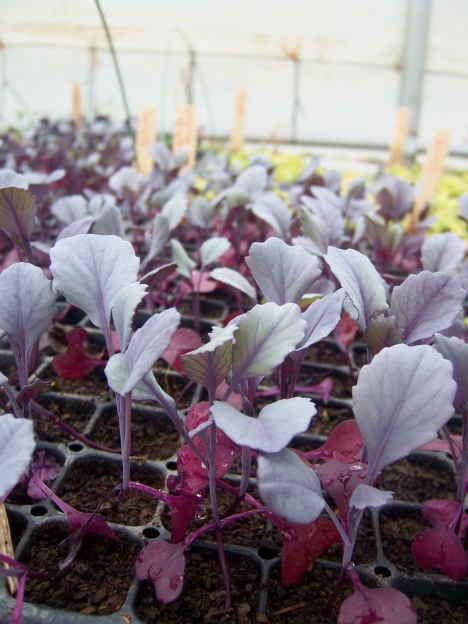
Red Cabbage.
There are five kinds of kale already in the field: Lacinato, Red Russian, White Russian, Siberian and Curly. Grab any one of them and some of Upper Meadows’ maple syrup and you’ve got the beginnings of this vegan dinner, or peruse the entries on kale in Mark Bittman’s blog for The New York Times. The stinging nettles are up and “beautiful”, Leonard says.
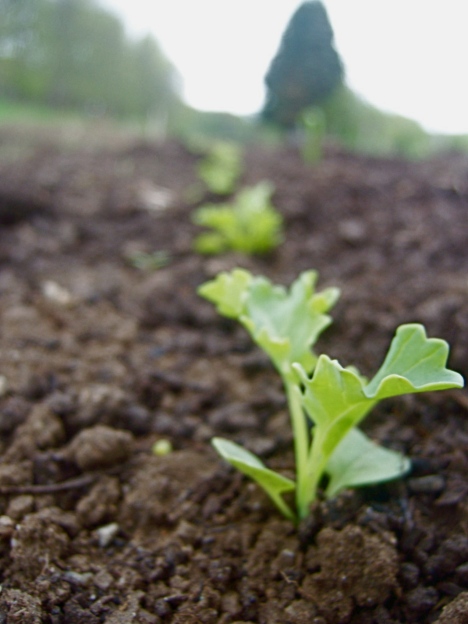
Little Lacinato Kale.
Then there are collards, which I have to admit I have never tried. The Food Network’s “Dinner Impossible” guy has them paired with bacon, which sounds very promising.
Red and yellow onions are in, in rows that are several hundred feet long. More rows are being planted. Also scallions–red, white, and green–and four varieties of hardneck garlic.
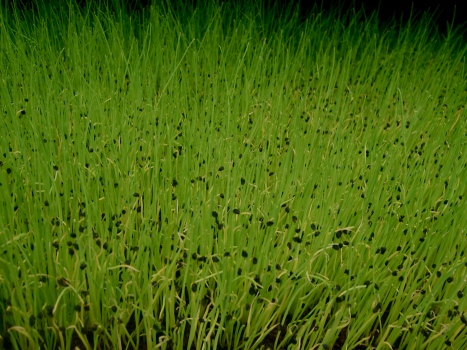
Scallions.
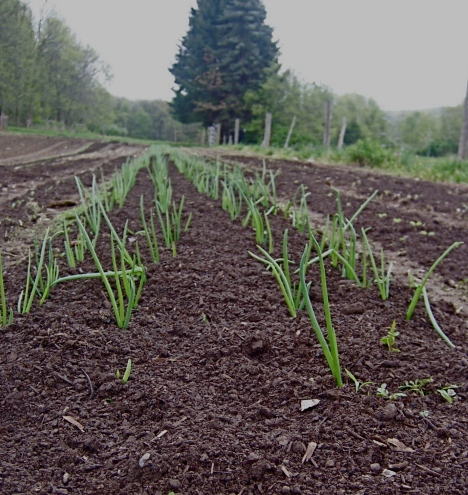
Red Onions.
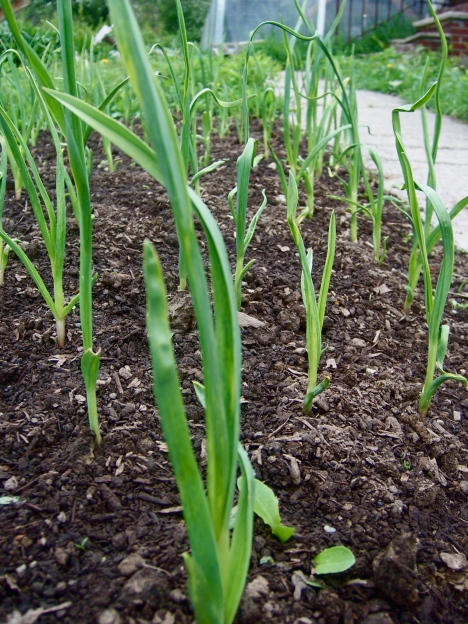
Garlic.
Leonard then moved on to the hundreds of plants started in his two greenhouses. There are 11 different varieties of lettuce, 9 different sweet peppers, 5 types of hot peppers, 7 kinds of basil and 3 kinds of parsely. There are garlic chives and onion chives, and sorrel. In place of the partridge in a pear tree, there is one variety of eggplant.
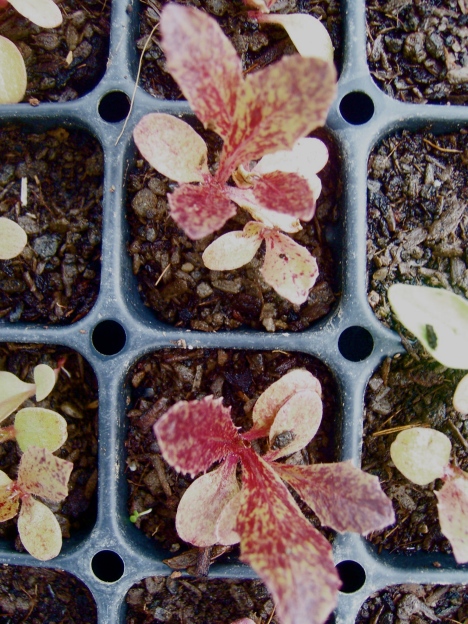
Forellenschluss Lettuce.
There is broccoli and a few different colors of cauliflowers, including that crazy orange variety. My friend Ann had a great idea for those at the end of a post on her blog on the wild turkey that wound up in her living room. And 2 kinds of tomatillos. I’m thinking salsa, or maybe a sauce for some chicken enchiladas.
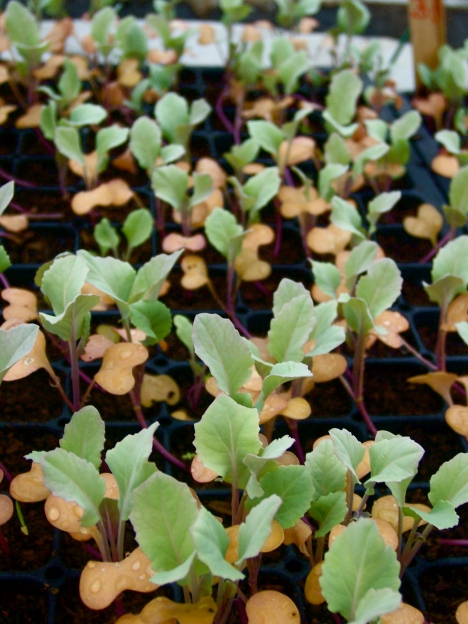
Cauliflower.
Megan, who lobbied for the expanse of Swiss chard that has been planted, told me that she did try to rein Leonard in on his tomato varieties. But he confessed last night that there are 23 different kinds growing in the greenhouses, ranging from cherries, to slicing and paste tomatoes. Some are in great quantities, like the Cherokee Purples (they make a killer tomato soup), and some, like the exotic Striped Green Zebras, in smaller amounts.
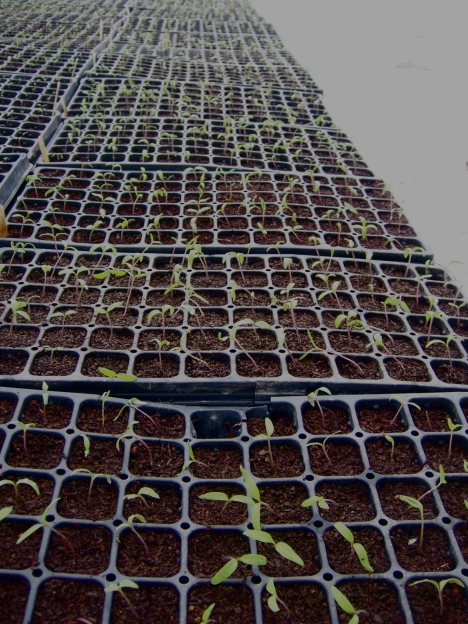
TONS of Tomatoes.
The greens category also includes what Leonard called “a full array of mustards”, arugula, Asian greens like Tatsoi, spinach and amaranth. If you have only ever had amaranth as a grain, you are in for a real treat with the leaves.
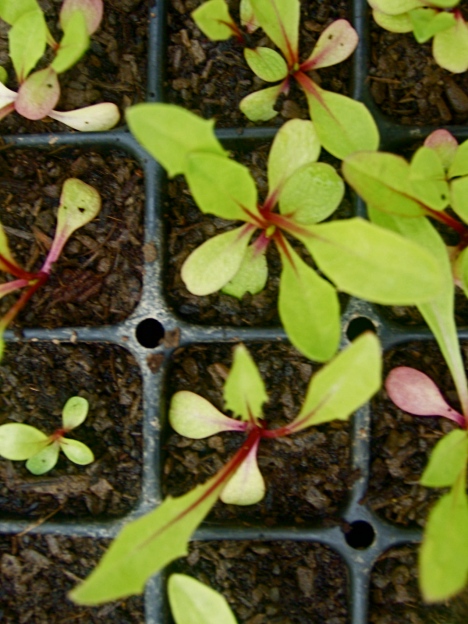
Chicory.
And more: The 5 kinds of zucchini and summer squash are being planted in waves in hopes that we will have them before, with and after our tomatoes. Leonard has got 4 kinds of cucumbers going, 3 of which will be pickling varieties. If you have never tried your hand at pickling, start with this recipe from Alton Brown, which is as easy as it gets. He has also started a small, white Lebanese squash, which sounds intriguing.
In the winter squash category, there are Turk’s Turban, Acorn and Spaghetti Squash, and several kinds of pumpkins, including my favorite for pie, the so-called Cheese Pumpkin.
What have I forgotten? Herbs! Thyme, 5 varieties of basil,summer savory, 2 or 3 sages, Greek and Italian oregano and majoram. Also several varieties of radishes, carrots, turnips and beets.
Leonard says that the beets don’t always return his love, and his caution is worth noting. Despite his best efforts–which this year include more fencing and irrigation in addition to the greenhouses–Mother Nature and predators can have their way with his plants. But with Leonard and everyone at Upper Meadows focused on bounty this year, I am very, very optimistic.
Filed under: On The Farm | Tagged: Amaranth, Asian Greens, Basil, Broccoli, Cauliflower, Chives, Collards, Cucumbers, Eggplant, Garlic, Herbs, Hot Peppers, Kale, Lettuce, Mustard Greens, Onions, Parsely, Pumpkins, Radish, Scallions, Squash, Sweet Peppers, Swiss Chard, Tatsoi, Tomatoes, Zucchini | 3 Comments »















